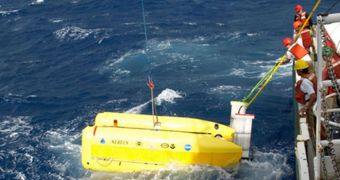The recent expedition to the Mid-Cayman Rise, in the Atlantic Ocean, revealed new and amazing types of hydrothermal vents. These are structures that act as valves, releasing hot gas from the Earth's crust and mantle into the waters. They are located at very high depths, and are widely considered to be among the most extreme environments on the planet, next to the areas around the poles and the interior of volcanoes. Scientists at NASA, which partially funded the new research, say that the new discoveries may hold clues as to how life may have evolved on other worlds.
The team that conducted the thorough study was led by experts at the Falmouth, Massachusetts-based Woods Hole Oceanographic Institution (WHOI), a privately-held, independent research organization dedicated to marine studies. Full details of the study conducted in the Atlantic were published in this week's issue of the esteemed journal Proceedings of the National Academy of Sciences (PNAS). The American space agency funded the study because it was interested in discovering extreme environments that may provide it with geologic, biologic, and chemical clues on how life appeared, developed and evolved on our planet.
The vents analyzed in this expedition provided researchers with an analogy to the environment they believe exists under the icy crusts of Jupiter's moon Europa. “Being the deepest, these hydrothermal vents support communities of organisms that are the furthest from the ocean surface and sources of energy like sunlight. Most life on Earth is sustained by food chains that begin with sunlight as their energy source,” explains Max Coleman, who is an expert at the NASA Jet Propulsion Laboratory (JPL), in Pasadena, California. He is also a coauthor of the PNAS paper.
“That’s not an option for possible life deep in the ocean of Jupiter’s icy moon Europa, prioritized by NASA for future exploration. However, organisms around the deep vents get energy from the chemicals in hydrothermal fluid, a scenario we think is similar to the seafloor of Europa, and this work will help us understand what we might find when we search for life there,” he argues further. “The discovery of ultramafic-hosted vent sites [rocky structures rich in magnesium and iron] such as those on the Mid-Cayman Rise could provide insight into the very earliest life on our planet and the potential for similar life to become established elsewhere,” German concludes.

 14 DAY TRIAL //
14 DAY TRIAL //